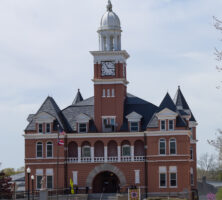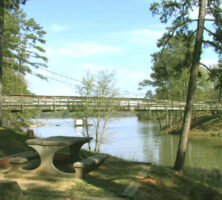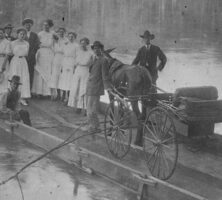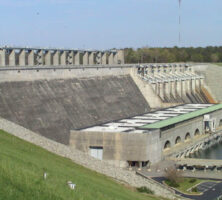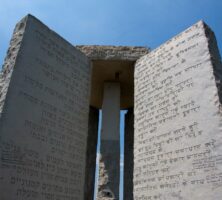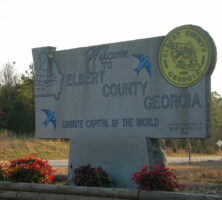In the northeast Georgia Piedmont, between the Savannah and Broad rivers, lies Elbert County.
The area was originally settled before the American Revolution (1775-83) by pioneers filtering into the region from Virginia and the Carolinas. The legal occupation of the lands that would later become Elbert County took place on June 1, 1773, when Georgia’s colonial governor, James Wright, negotiated a land cession with local Creek and Cherokee leaders. The cession, known as the New Purchase, contained about 2 million acres north of Augusta and was originally designated as Wilkes County.
During the American Revolution Wilkes County became the scene of severe partisan fighting among Tories, patriots, and Indians. One of the Revolution’s most famous heroines, Nancy Hart, lived in a log cabin along the Broad River and earned a place in history by single-handedly defeating a party of Tories who had invaded her home.
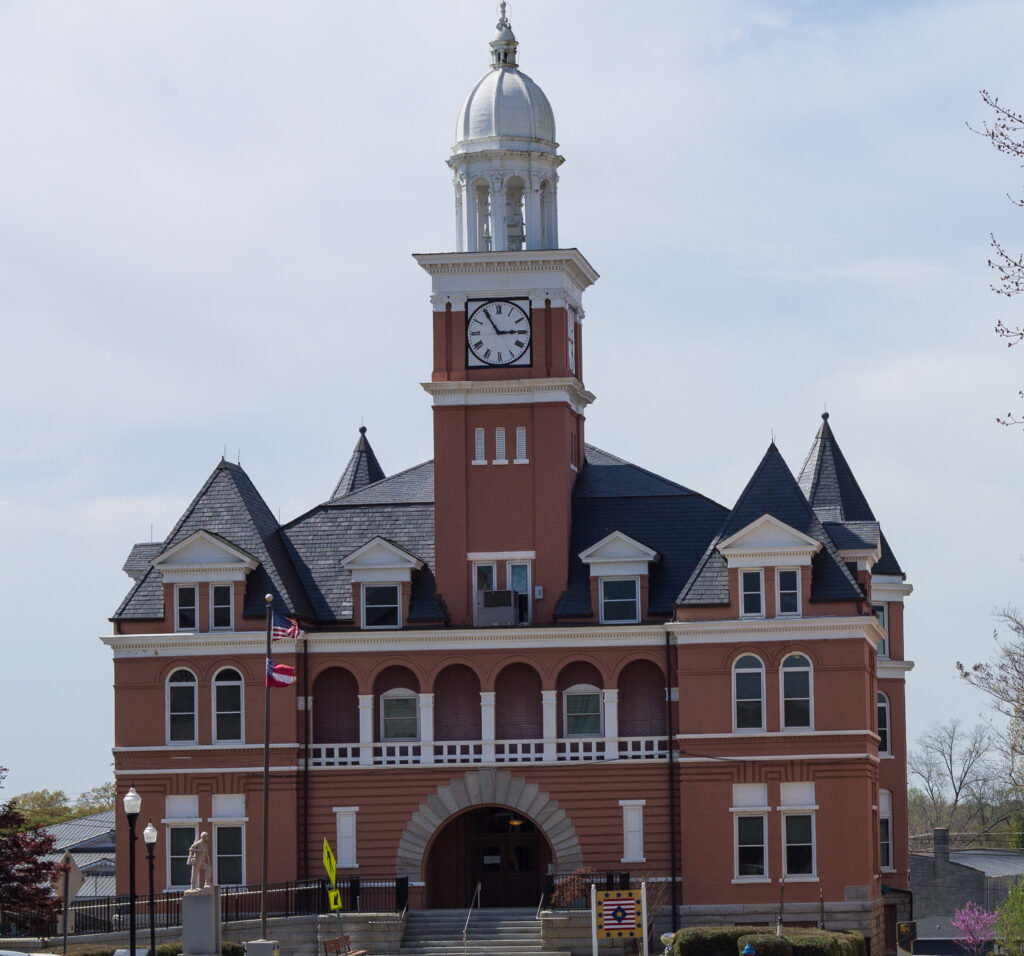
After 1783 the area’s population steadily increased. Many of the newcomers were veterans of the Revolution who had been awarded land grants in the region for their service to their country. On December 10, 1790, Elbert County was split from Wilkes County by an act of the state legislature and thus became Georgia’s thirteenth county. It was named in honor of Samuel Elbert, who was a commander of Georgia’s militia and Continental forces during the Revolution. Elbert later served as Georgia’s governor from 1785 to 1786.
After the Revolution the most important town to emerge in the county was Petersburg, located at the fork of the Broad and Savannah rivers. From the 1790s through the 1830s Petersburg flourished as a commercial center serving Elbert County and the Goose Pond community along the Broad River. Petersburg’s prosperity was initially based on the tobacco trade, and a warehouse was set up in the town to inspect the staple crop before it was floated down the river on flat-bottomed “Petersburg boats” to Augusta. Petersburg’s decline came gradually after the War of 1812 (1812-15) as many of its most prominent citizens moved west to newly opened lands. Tobacco became less important, too, and most of the area’s farmers turned to the cultivation of cotton, which, unlike tobacco, did not have to be inspected. Railroads completely bypassed the town, hastening its demise. A series of floods and malaria outbreaks sealed the town’s fate. Petersburg was virtually abandoned by the eve of the Civil War (1861-65).
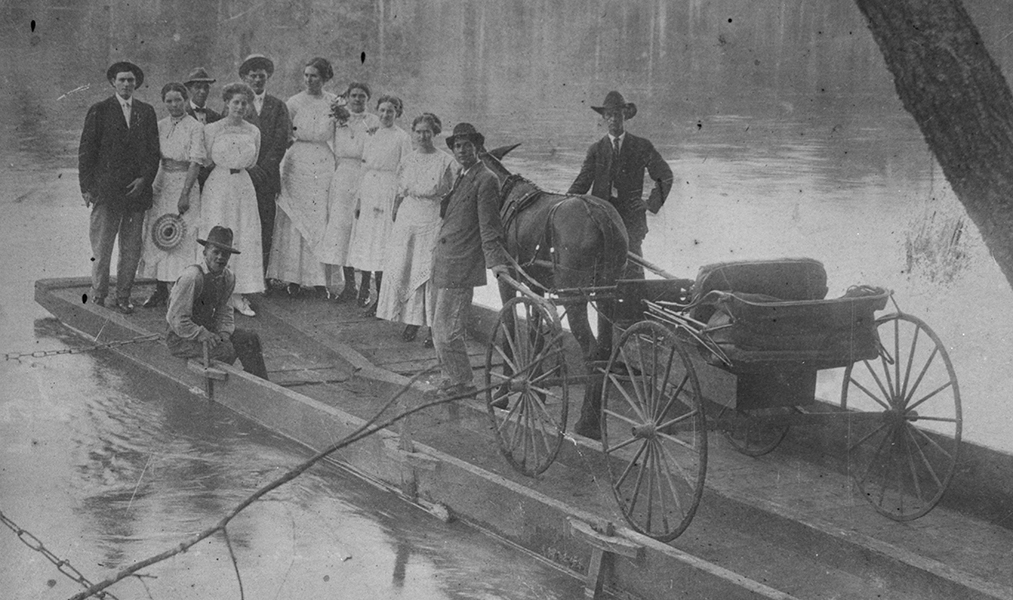
Elberton, the county seat, was incorporated in 1803 near what was known as the old town spring, although people had been living at the site since the 1790s. Initially surpassed in importance by Petersburg, Elberton became, by the 1840s, the county’s most important town. During this time the county boasted several other communities, including Ruckersville, the home of Joseph Rucker, one of Georgia’s first millionaires, and Edinburg (Edinborough), a small hamlet founded by Scottish immigrants at the fork of Cold Water Creek and the Savannah River.
Elbert County was swept up in the sectional turbulence that gripped the nation during the 1850s, and as a slaveholding community primarily based on the production of cotton, it heavily endorsed secession. During the Civil War many of the county’s men joined the Confederate army. Portions of the Fifteenth, Thirty-seventh, and Thirty-eighth Georgia Infantry Regiments included companies that were raised in Elbert County. Also, one company of the Seventh Georgia Cavalry came from Elbert County. Fortunately, General William T. Sherman’s armies bypassed Elbert County during their march to the sea, sparing its citizens from the destruction and devastation visited upon other towns and communities in the state.
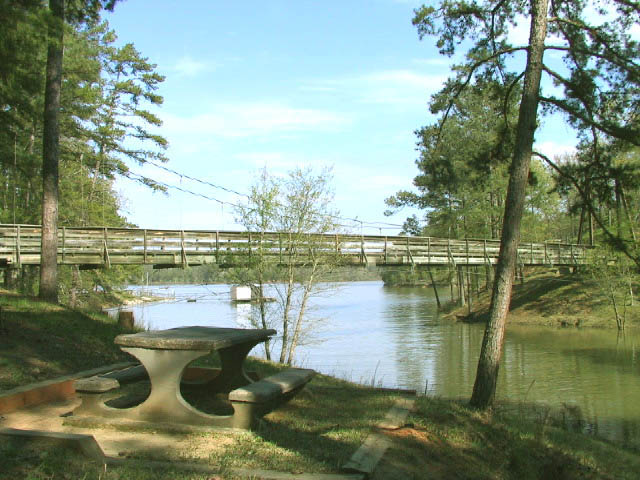
After the war Elbert County remained wedded to the cotton industry and existed as a rural, agricultural community. This began to change in 1882, when the first granite quarry was opened near the north fork of the Broad River to provide stone for railroad and home construction. By the 1920s Elberton’s granite industry had become firmly established and had overtaken agriculture as the economic centerpiece of the county. Many immigrants, particularly Italians, who had historical roots in the granite trade, came to Elbert County between 1900 and 1930. During the Great Depression of the 1930s the industry not only survived but also expanded, justifying the town’s boast that it was the “granite capital of the world.”
Elbert remains primarily a rural county of agricultural fields and timberland, but its economy is firmly rooted in the granite industry. According to the 2020 U.S. census, the population is 19,637. Army Corps of Engineers lakes lie on its eastern border with the Savannah River, making the county a prime destination for water-recreational activities. Clarks Hill Lake (also known as J. Strom Thurmond Lake), completed in the early 1950s, is located on the southern tip of the county, while just above it is Russell Lake, completed in the 1980s. Two state parks are located in Elbert County: Bobby Brown State Park, marking the site of the old town of Petersburg, which is under the waters of Clarks Hill Lake, and Richard B. Russell State Park on Russell Lake.











